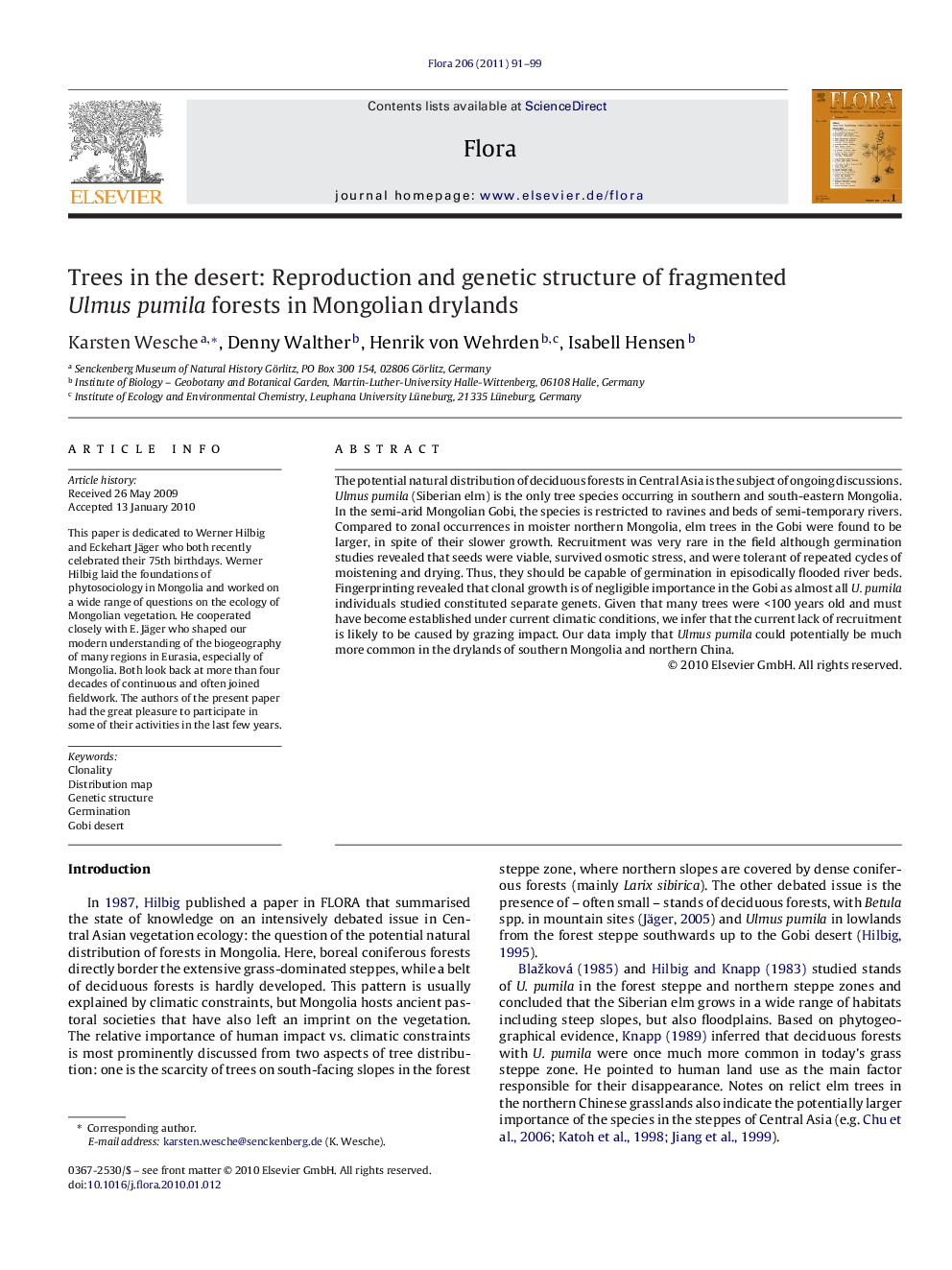| کد مقاله | کد نشریه | سال انتشار | مقاله انگلیسی | نسخه تمام متن |
|---|---|---|---|---|
| 2179912 | 1095093 | 2011 | 9 صفحه PDF | دانلود رایگان |

The potential natural distribution of deciduous forests in Central Asia is the subject of ongoing discussions. Ulmus pumila (Siberian elm) is the only tree species occurring in southern and south-eastern Mongolia. In the semi-arid Mongolian Gobi, the species is restricted to ravines and beds of semi-temporary rivers. Compared to zonal occurrences in moister northern Mongolia, elm trees in the Gobi were found to be larger, in spite of their slower growth. Recruitment was very rare in the field although germination studies revealed that seeds were viable, survived osmotic stress, and were tolerant of repeated cycles of moistening and drying. Thus, they should be capable of germination in episodically flooded river beds. Fingerprinting revealed that clonal growth is of negligible importance in the Gobi as almost all U. pumila individuals studied constituted separate genets. Given that many trees were <100 years old and must have become established under current climatic conditions, we infer that the current lack of recruitment is likely to be caused by grazing impact. Our data imply that Ulmus pumila could potentially be much more common in the drylands of southern Mongolia and northern China.
Journal: Flora - Morphology, Distribution, Functional Ecology of Plants - Volume 206, Issue 2, February 2011, Pages 91–99